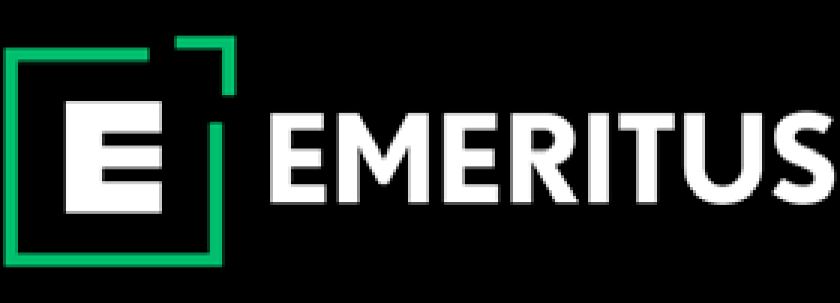Designing Product Logos that Stand Out: Elements, Principles, and Importance

- What is a Product Logo?
- Types of Product Logos
- Principles of a Good Product Logo
- How Important is a Product Logo in Building Brand Identity?
- How Do You Create a Unique Product Logo?
- What are the Common Design Elements in a Product Logo?
- How Does Color Theory Play a Role in Product Logo Designing?
- Learn more About Product Logo and Product Management With Emeritus
Modern-day customers not only have abundant choices in terms of products and services, they also have the resources to find the right fit for their needs. That is why businesses have to work hard to create a compelling brand with a strong product logo to capture customer attention. Firstly, a strong product logo helps in making companies stand out in the crowd. Additionally, it allows businesses to establish a distinctive visual and brand identity that sets them apart from the competition. Furthermore, a designed product logo creates a lasting impression in customers’ minds. This blog will dive deeper into the different types of product logos and the best practices for creating an effective one.
What is a Product Logo?
A product logo is a symbol comprising text, images, colors, and other elements used to identify a brand’s product or services. Simply put, it is a visual representation of elements carefully chosen to represent a product’s key message.
Types of Product Logos
Product logos can be broadly divided into four categories: textual, illustrated, symbolic, and combination. While textual logos comprise words and typography, illustrated logos consist of illustrations. Meanwhile, symbolic logos are created using abstract designs, and combination logos rely on text, illustrations, and symbols.
Principles of a Good Product Logo
There are five vital principles that most designers follow when designing a product logo. They include:
- Simplicity: The design shouldn’t be busy, distracting, or confusing.
- Timelessness: It should be future-proof.
- Memorability: Customers should quickly recognize the logo design.
- Appropriately: The design should match the ideologies and preferences of the target audience.
- Versatile: The logo should be capable of scaling to different sizes without losing quality.
Also Read: Learn How to Use Product Design to Achieve Business Goals: A Complete Guide
How Important is a Product Logo in Building Brand Identity?
A product logo plays a vital role in building brand identity. It creates a memorable and recognizable visual representation. Furthermore, it conveys the brand message using symbols, patterns, and text. Here are some reasons why a product logo is crucial to building brand identity:
1. Recognition and Differentiation
A well-designed logo creates a visual imprint in the customer’s mind. So, every time customers see similar visuals, they are reminded of the brand. For instance, customers often associate the swoosh with Nike, a popular sportswear brand.
2. Brand Image and Perception
A logo can convey a brand’s image and personality, whether it is professional, playful, modern, or traditional. For instance, the colors, typography, and design elements used in a logo can create a perception of the brand in the minds of consumers.
3. Brand Consistency
A logo serves as a consistent visual element that can be used across various marketing materials, such as packaging, websites, social media, and advertisements. Additionally, consistent use of a logo creates a unified brand presence and reinforces the brand identity in the minds of consumers over time.
How Do You Create a Unique Product Logo?
Here is a step-by-step guide on how to create a unique product logo that conveys a company’s mission, vision, and objective.
1. Define Your Brand
Start by understanding the brand’s values, ideologies, personality, and purpose. In parallel, start answering questions such as: What makes the brand unique? What are the key messages the brand wants to convey? As a result, this will help companies establish a clear brand identity.
2. Understand the Competition
The next step is to conduct an in-depth analysis of competitors’ logos. This will help designers and product managers create a unique logo.
3. Research Your Audience
After analyzing competitors’ logos, the next step is understanding the target audience’s likes and dislikes. This helps companies create product logos that resonate with their target audience.
4. Keep it Simple
A simple logo is more memorable and versatile. Moreover, it helps the audience determine the brand’s identity and purpose more quickly. Therefore, strive to create a clean, simple, and uncluttered logo. However, it’s essential to develop a product logo that can be scaled without compromising on quality.
5. Ensure Versatility
Always create a versatile logo. Determine where and how the logo will be used. Also, consider the sizes, formats, and color variations before finalizing the design. This ensures that the logo can be used across different materials and product lines without tampering with its quality.
Also Read: Innovation in Action: A Step-by-Step Guide to Creating a Product Prototype
What are the Common Design Elements in a Product Logo?
Product logos can vary greatly depending on the brand and its design objectives. However, here are some design elements that are often commonly considered in product logos:
1. Shapes
The shape of a logo is a significant design element. It can be simple or complex, geometric or organic, and it can convey different meanings or associations. The shape of a logo should align with the brand’s identity and message.
2. Icons
An icon is a visual representation of the brand’s identity and message. It can be an abstract shape, a literal representation of the product or service, or a combination of both. Icons or symbols are often used to create a unique and recognizable element of a logo.
3. Colors
Color is an important design element in a logo because it conveys emotions, evokes feelings, and creates brand recognition among the target audience. A well-thought-out color palette can help make a logo memorable and impactful.
4. Typography
Typography refers to the fonts used in a logo. The choice of typography can significantly impact a logo’s overall look and feel. Therefore, it should be aligned with the brand’s personality, values, and target audience.
5. Negative Space
Negative space refers to blank areas in a logo that are not occupied by any design elements. Designers can cleverly use negative space to convey hidden meanings or visual illusions, adding depth and creativity to a logo.
How Does Color Theory Play a Role in Product Logo Designing?
Color theory plays a significant role in designing a product logo. It conveys the brand’s personality, values, and ideologies to its target audience. Moreover, it creates visual harmony, conveys emotions, and communicates the brand message effectively. That’s why designers use color theory while designing a product logo.
Learn more About Product Logo and Product Management With Emeritus
Aspiring product managers and designers can learn more about product logos and product management by enrolling in product management courses offered by Emeritus. These courses will help learners create a brand strategy that connects customers to the company more. Furthermore, these courses will equip learners with crucial product ideation, development, and testing skills.









